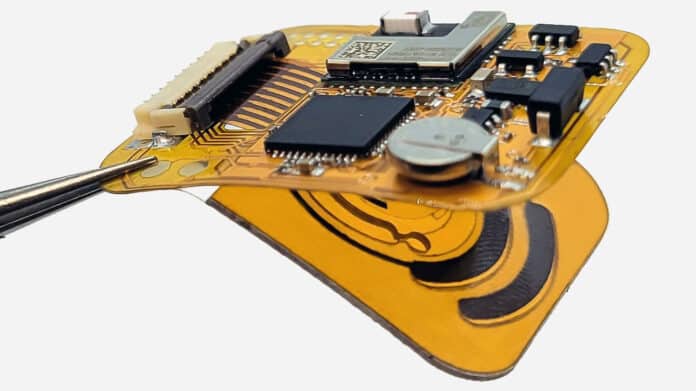The C-reactive protein, or CRP, secreted by the liver, is commonly associated with inflammation. Its presence in the bloodstream strongly indicates an underlying health condition. CRP is much more difficult to detect because it is at a much lower concentration than other biomarkers.
Now, Caltech researchers have created a wearable skin sensor that is the first type and can wirelessly detect the presence of CRP in human sweat. Without more invasive blood tests, this sensor will make it simpler for people and medical professionals to track their health.
Researchers created this CRP sensor using laser-engraved graphene, a sheet-like form of carbon. The graphene structure has a lot of surface area because of its numerous small pores. These pores include unique chemicals (redox molecules) that can produce a small electrical current under specific circumstances and antibodies that attach to CRP.
Gold nanoparticles, another sensor component, carry a distinct set of CRP antibodies (detector antibodies).
When CRP molecules enter the sensor through sweat, they bind to the graphene and detector antibodies on the gold nanoparticles. This temporarily bonds the nanoparticles to the graphene and causes the redox molecule to produce an electrical current that the sensor’s electronic components can detect.
Wei Gao, whose lab is responsible for developing a variety of wearable sweat sensors, including this latest one, said, “Because each gold nanoparticle contains multiple detector antibodies, they amplify the minuscule signal that a single CRP molecule would otherwise provide.”
The sensor was also created to monitor the concentration of ions in the sweat, the pH of the sweat, and skin temperature to account for the impact of differences in sweat components from person to person on the electrochemical signal of the biosensor.
Gao says that the work demonstrates for the first time that sweat CRP can be detected accurately and has a good correlation with its counterpart in blood, which has implications for his work in the lab and practical medical applications.
“This general platform lets us monitor extremely low-level molecules in our body fluids. We hope to expand this platform to monitor other clinically relevant protein and hormone molecules,” he says. “We also want to see if this can be used for chronic disease management. Inflammation is a risk for many patients. If they could be monitored at home, their risk can be identified, and they can be given timely treatment.”
Journal Reference:
- Tu, J., Min, J., Song, Y. et al. A wireless patch for the monitoring of C-reactive protein in sweat. Nature Biomedical Engineering (2023). DOI: 10.1038/s41551-023-01059-5
